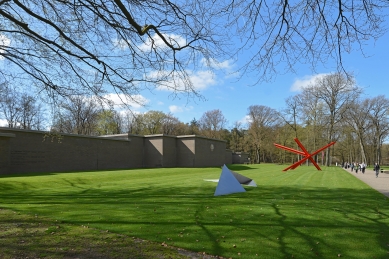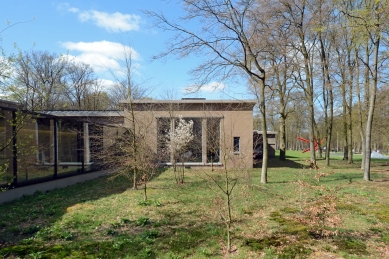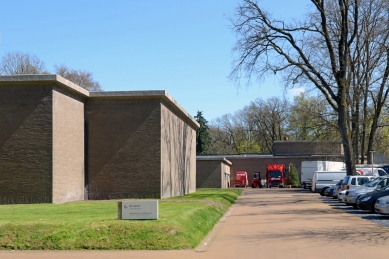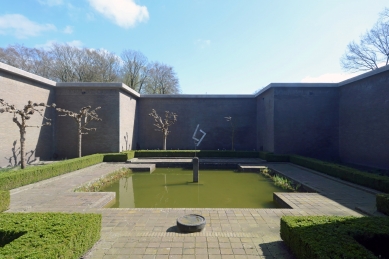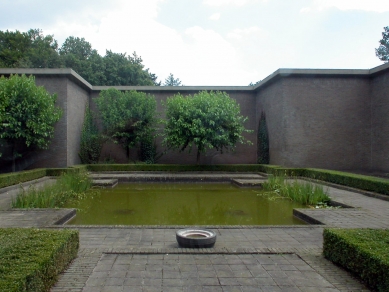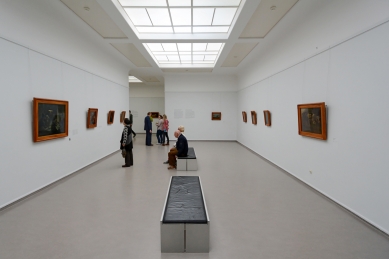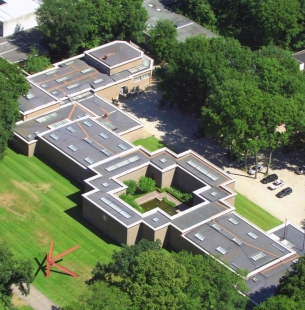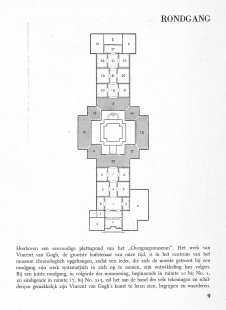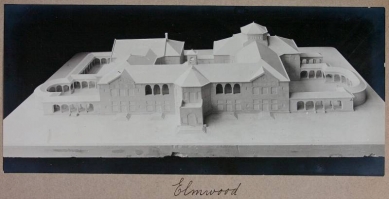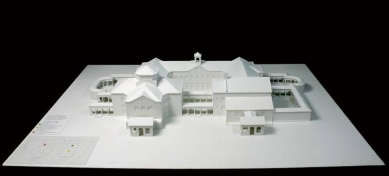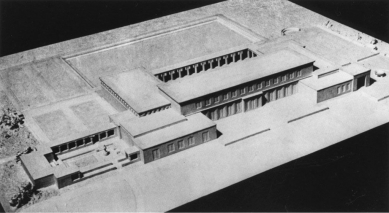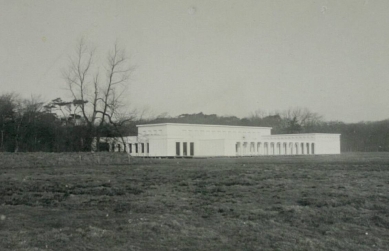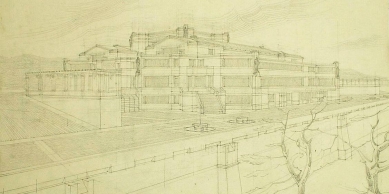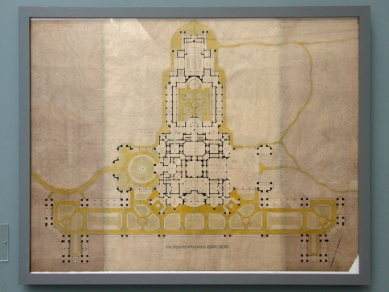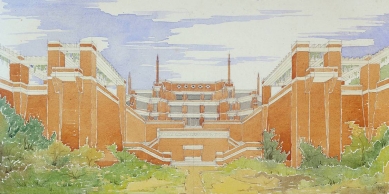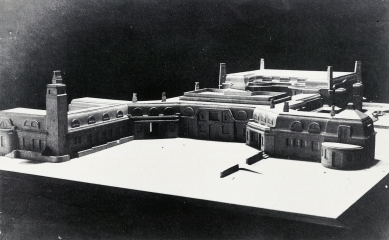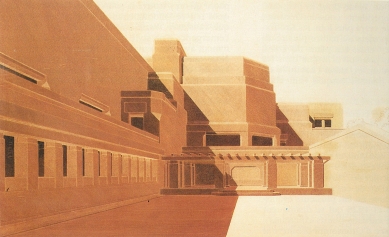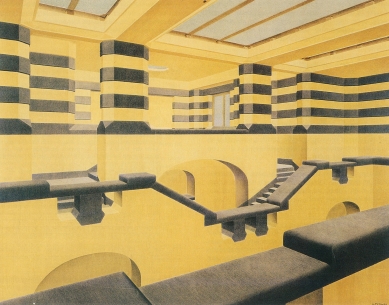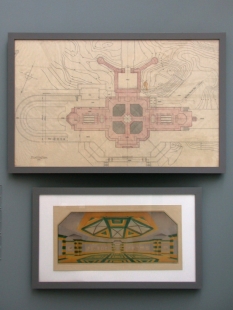If you visit the Netherlands, you should not miss the Kröller-Müller Museum, where besides modern art, you can also view the works of the most significant architectural personalities of the 20th century. The main museum building by Henry van de Velde (1936-38) is the result of more than thirty years of searching, in which the most distinguished architects of the time participated.
In 1911, the Kröller-Müller family acquired the Ellenwoude estate in Wassenaar, where they wanted to build a museum for their extensive collections.
In 1912, they contacted Hendrik Petrus Berlage and Peter Behrens. Behrens entrusted his assistant Ludwig Mies van der Rohe with the work on the commission. To get a sense of the spatial effects of the building, they constructed a sliding model scaled 1:1 from wooden slats covered with fabric.
The Kröller-Müller family decided to proceed with Mies, who had meanwhile left Behrens' workshop.
While Helene Kröller-Müller preferred Mies's design, her teacher H.P. Bremmer selected Berlage's project, as in his opinion it "more clearly expressed that it was a building for art."
Initially, the museum was to be located on the Ellenwoude estate, but it was later moved to the forest area of Franse Berg in Hoenderloo, where H.P. Berlage created a revised design in 1918, but from 1920 the family continued with Henry van de Velde. After the foundations were dug, construction was halted in 1922 due to financial reasons. However, Velde diligently worked on further designs between 1923-26, resulting in thousands of additional sketches and plans. The significantly revised design was not completed by Velde until 1938.
After World War II, pavilions were added to the museum grounds for the display of sculptures in the open air: Gerrit Thomas Rietveld (1955) and Aldo van Eyck (1966).
The most significant post-war modifications are attributed to Wim Gerhard Quist, who regularly returned (1971, 1977, 2000, 2016) and, in addition to significantly expanding the exhibition areas, is also responsible for the exhibition of art objects and furniture design. In 1995, a trio of Rotterdam architects MVRDV built three new kiosks, and in 2019 the studio Monadnock completed a new entrance pavilion to the museum park.

